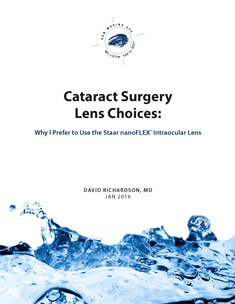In part 3 of my 4 part series on blue-blocking IOLs I am going to discuss the reasons why it might not be such a great idea to implant a blue-blocking IOL into the eye.
Color Perception Concerns
If you have ever tried on a pair of blue-blocking sunglasses, do you remember your initial impression? Many people find the yellowing of their world to be a bit disconcerting. Contrast is usually notably improved, but at what cost? I personally do not like the tint though I do appreciate the improved contrast sensitivity when I’m on the slopes.
But, unlike my ski goggles, an IOL cannot be put in or taken out based on one’s activities. Once it’s placed, it’s there for life (one hopes, anyway). Does a tinted IOL significantly affect color perception? Current studies are conflicting on this point. Of those who have had a tinted IOL placed in one eye and a non-tinted IOL in the other most do not perceive a difference. However, some do notice it. It may be that those who notice this color difference are the ocular equivalent of audiophiles. Most of us cannot tell the difference between a song played back on CD or 128bit MP3 – but run the same comparison by a professional musician or audiophile and the difference will be obvious to them. Could the same be true of color perception?
Possible Disruption of the Natural Circadian Rhythm
Our normal sleep-wake cycles are set by exposure to light – specifically, the blue wavelengths of light. Blue light suppresses the production of melatonin which is thought to be the main hormone that controls our sleep-wake cycle. Theorhetically, blocking these wavelengths of light could disrupt this cycle. However, the available clinical studies are not conclusive one way or the other.
Lack of Strong Evidence of Any Benefit
The blue-blocking filter in the Alcon Acrysof IOL mimics the yellow tint present in the average 50 year old human lens. This begs the question: why would anyone want an IOL that mimics a 50 year old lens? The answer presumes that there is a definite benefit to blocking these wavelenghts of light. But is there? And if there is not, wouldn’t you rather have a lens that mimics that of a 20 year old?
So, is there or isn’t there a benefit to blocking the shorter wavelengths of light? I’ll pick up this thread in my next post.
© 2009 David Richardson, MD







Leave a Reply